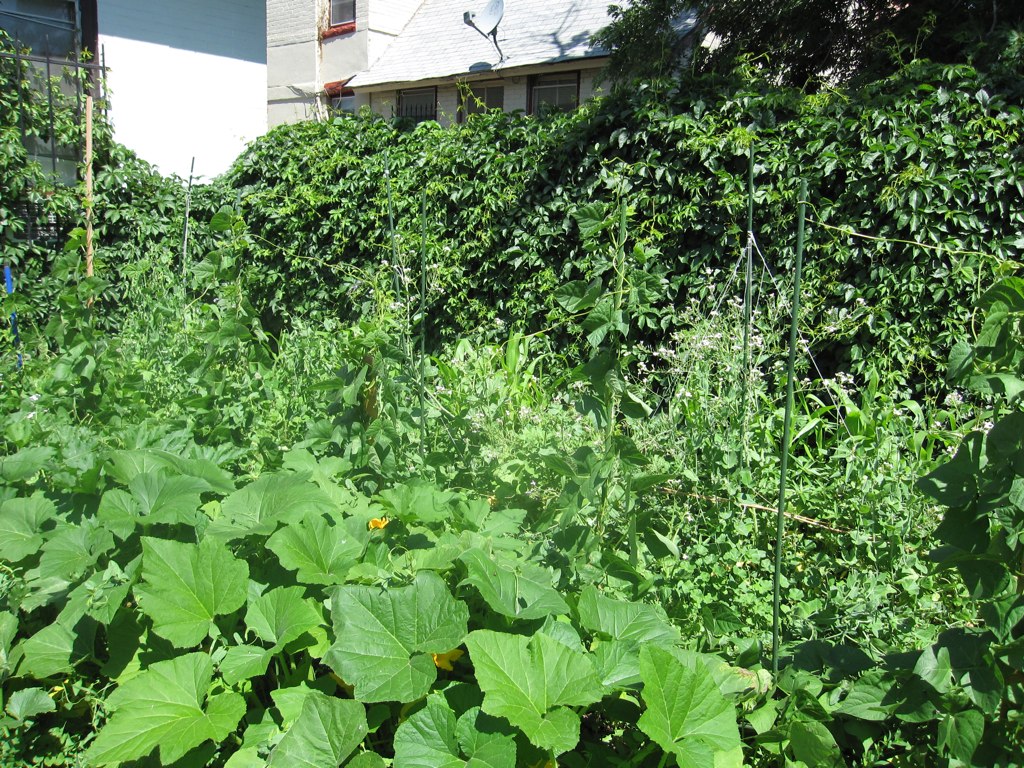
Companion planting is all the rage these days, but did you know this practice goes back thousands of years?
The three sisters garden is one of the oldest and most well known companion planting styles.
Believed to be named by the Iroquois well before colonials landed in America, this style of companion planting works by growing three crops together in a symbiotic relationship.
What is a three sisters garden?
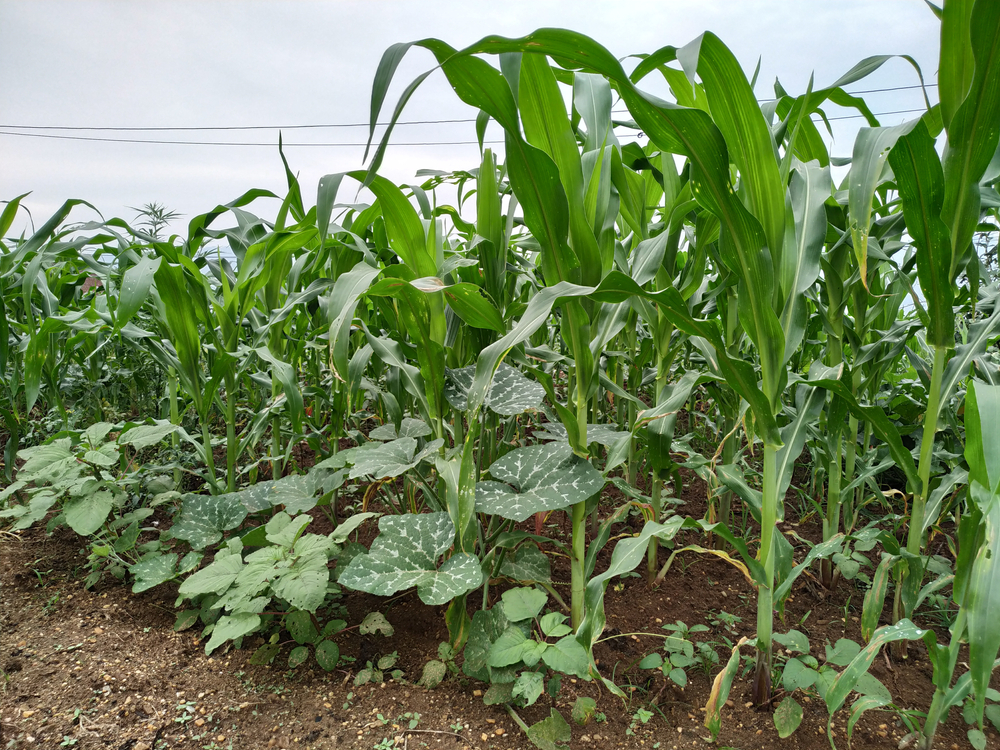
A three sisters garden is one of the most traditional forms of companion planting, where all the plants in one area contribute to the growth and success of the other plants.
The three sisters garden contains three plants: corn, beans, and squash.
All of these plants work in harmony to support each other while they grow.
The Plants In A Three Sisters Garden
Corn
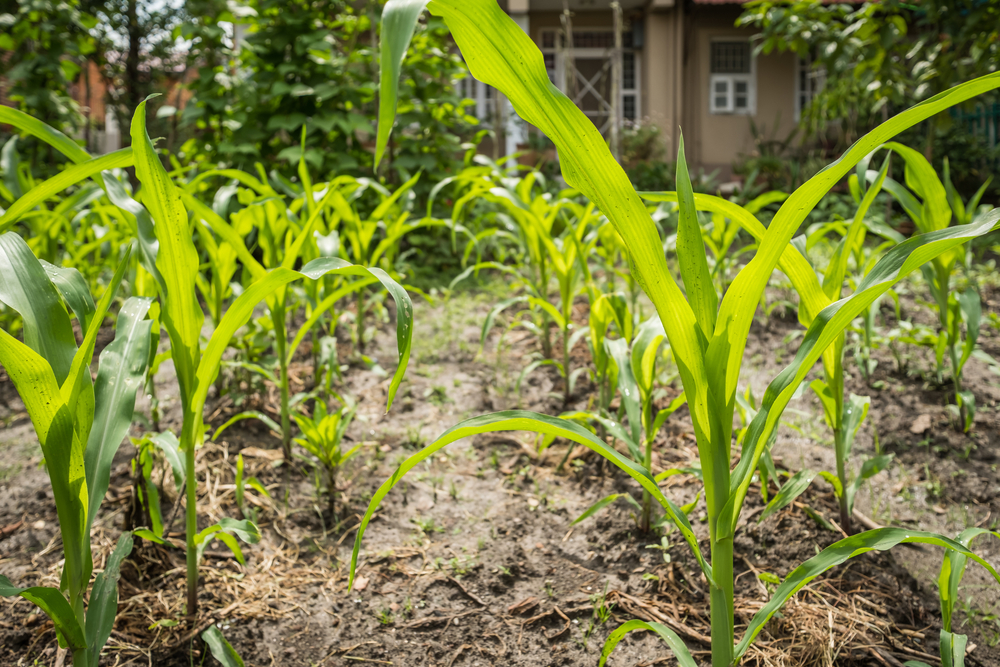
Corn provides the support system for the other two sisters. Corn grows fast, strong, and tall. All its nooks and crannies provide the perfect support for the twirling vines of pole beans to climb.
Flint or flour corn work best in a three sister garden, as they’re to be harvested at the end of the growing season.
Beans
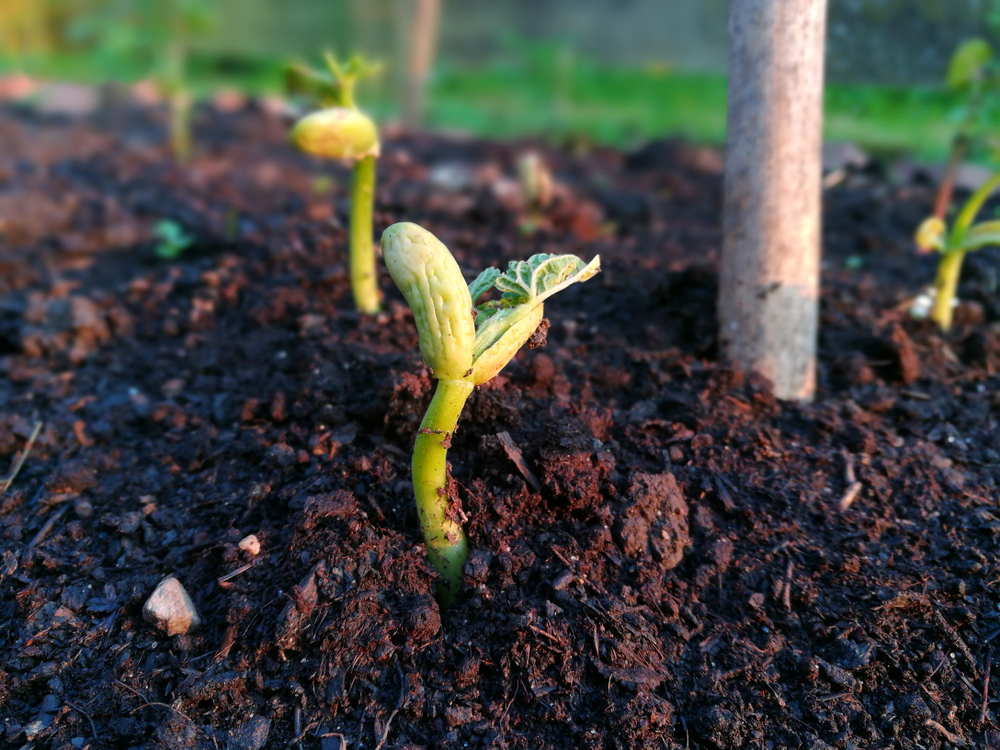
Beans need to climb in order to reach enough sunlight to produce their crop. The beans climb the corn and wrap and wind their way around the plant in search of sun.
The beans give back to the corn and squash because they’re a nitrogen fixing plant. Beans put nitrogen into the soil at their roots, which helps to feed the corn and squash.
When growing a three sisters garden, always use pole beans, not bush beans. Pole beans are the type to climb, where as bush beans stand on their own, but take up more space with their bushiness.
Squash
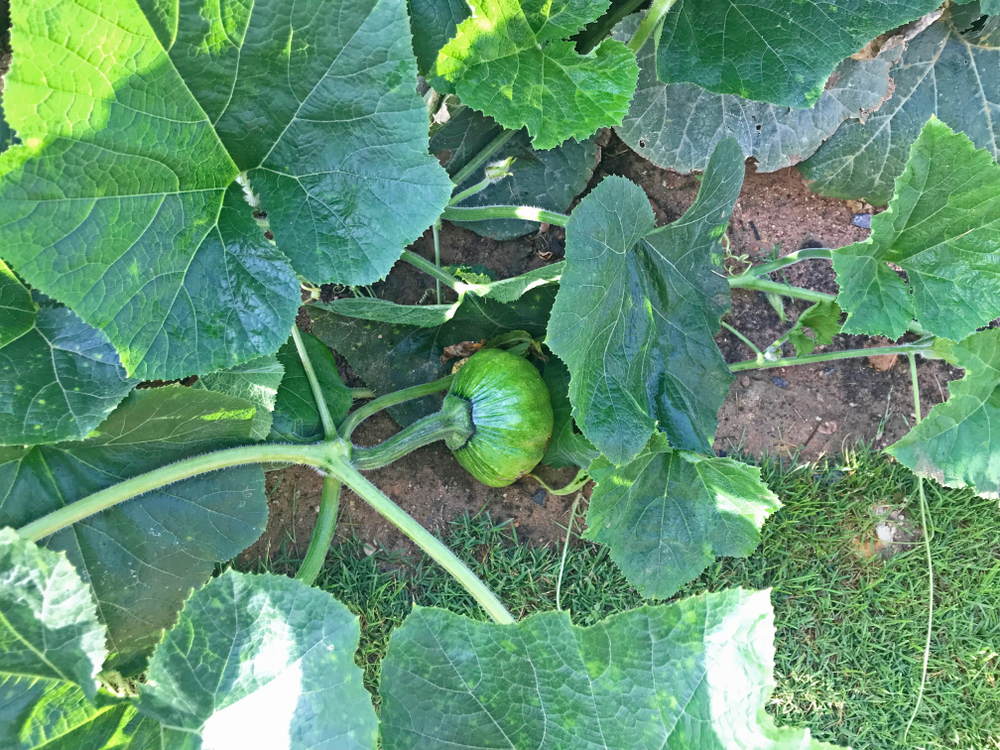
The big, broad leaves of the squash plant provide shade and cover to the soil beneath the plants. This prevents weeds from taking root, and keeps the soil moist, which hydrates the plants.
The squash also wards off pests like insects and animals with its spiny leaves and vines.
Any type of squash will work for a three sisters garden, whether its pumpkin, summer squash, or hearty winter squash like acorn and butternut.
Why you should plant a three sisters garden
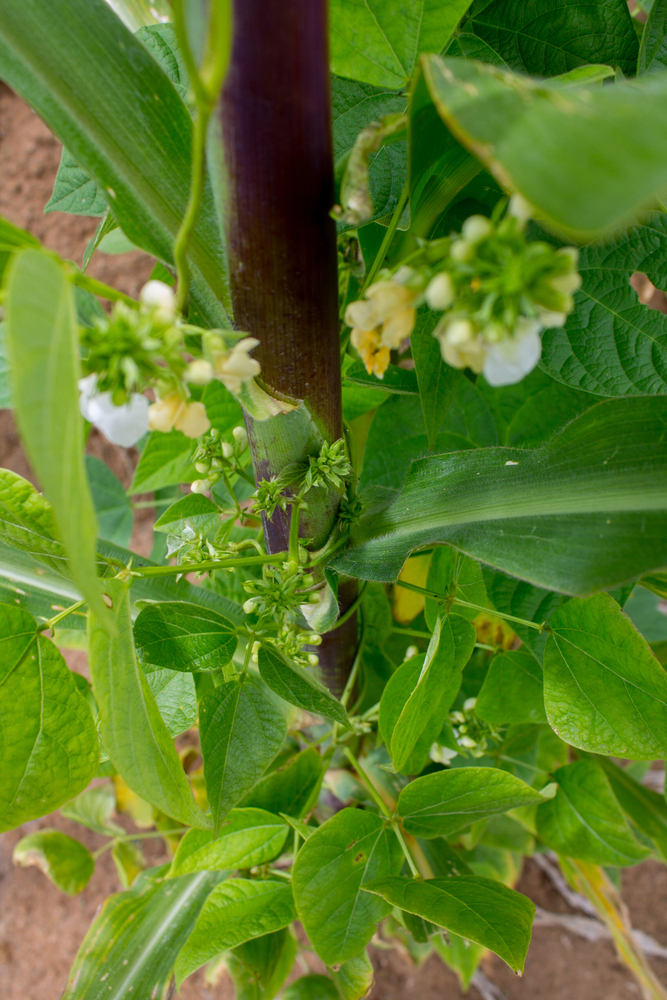
Corns, beans, and squash are all high impact, heavy water and feeding needs plants. Growing them separately takes a lot of space, time, and energy to keep them growing and producing. Growing them all together in one garden saves you big time.
The large leaves of the squash provide ground cover, which helps to keep the plants watered, as well as cuts down on weeding for you.
The fact that the beans climb the corn means that you don’t have to take the time to make trellises and train the beans to climb them.
The beans feed the corn and the squash, which will save you on fertilizer and time spent applying it.
Growing all of these crops together not only saves you time and money, it saves space!
These three crops grown separately can take up acres of land, but grown together they can survive and even thrive in small backyard gardens.
How to plant a three sisters garden
1. Be sure that the danger of frost has passed for your planting region before beginning. All three of these crops will not survive temperatures below freezing.
2. Choose a planting site that gets full sun (6 or more hours) and has rich soil full of organic matter. Due to the fact that corn is wind pollinated, it’s helpful to prep several mounds that are each 5 feet apart so you’ll be sure your corn pollinates.
3. Till the soil and rake it into a mound, 18 inches in diameter and 6-10 inches tall. Rake the top of the mound so it’s flat. If you have compost or fertilizer, rake that into the soil too.
4. Plant 4-6 corn seeds in a circle in the center of the mound. Plant the seeds approximately 6 inches from the center of the mound. Keep it watered and weeded while the corn sprouts and grows.
5. When the corn is 6 inches tall, plant the beans in a circle around the corn, about 6 inches from the corn sprouts.
6. One week after planting the beans, plant the squash seeds along the outer edge of the mound.
7. Keep the garden weeded and watered until the squash leaves come in and help with ground cover.
8. When the beans start to vine, encourage them to climb the corn by moving vines right next to the corn stalk. If you planted a vining squash, you’ll need to keep it away from the corn so it doesn’t also climb the corn.
Helpful tips for your three sisters garden
No space for corn? Try sunflowers instead!
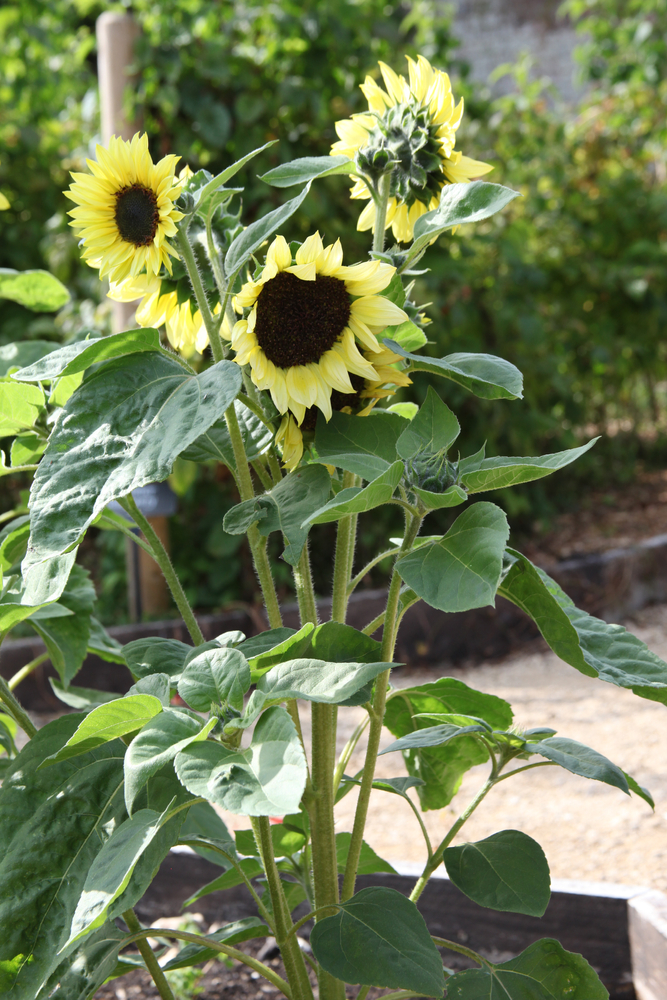
This same concept can be done by growing sunflowers instead of corn. They tend to be easier to grow, take up less space, and are still strong enough to support climbing beans.
Fertilize frequently
While the theory is that the bean crops ‘fix’ the nitrogen in the soil and help feed the corn, it takes time to work and your beans may not provide enough nitrogen to the soil in the first year.
Be sure to amend the soil with compost or fertilizer before planting, and fertilize frequently throughout the growing season. Corn, in particular, is a heavy feeder and will appreciate a boost in nutrients!
Harvesting tips
Many beans varieties are good for fresh eating or drying. For fresh eating, harvest the beans when they’re still green. For dry, allow the beans to dry completely on the stalk, then pick them and shell them, allowing them to dry for a week longer before storing.
When the corn husks have dried, pick them and spread them in a cool, dry place to prevent mold.
Harvest squash when they’ve reached full size and either eat them fresh or store them in a cool dry place until you’re ready for them.
Hill up after planting
After the corn sprouts and reaches several inches tall, use soil to hill up around the corn stalk. This will make it more stable in high winds and less likely to fall over.
Are you ready to start your three sisters garden?

Get the famous Rural Sprout newsletter delivered to your inbox.
Join the 50,000+ gardeners who get timely gardening tutorials, tips and tasks delivered direct to their inbox.

